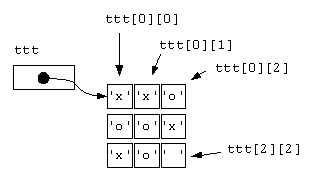char ttt[3][3] = {{'x', 'x', 'o'},
{'o', 'o', 'x'},
{'x', 'o', ' '}
};
The memory for this array could be visualized as in the diagram to the right, which identifies a few cells by their subscripts.

